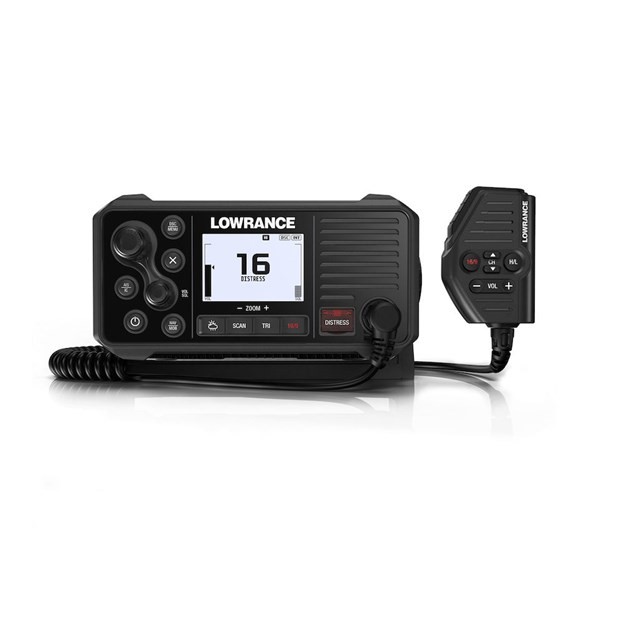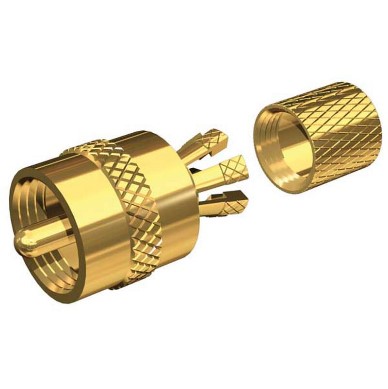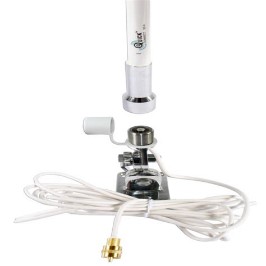Marine Radio Basics
By Lance Valentine
In today’s world of cell phones being used for much more than a phone, it is still important that boaters, especially those on the Great Lakes, pay attention to what they have available to communicate with other boats or the Coast Guard. Just a decade ago it was hard to find a Great Lakes boat without a VHF radio and unfortunately today they are rare. A good quality VHF marine radio is important to have for many reasons.
Why have a VHF
The obvious answer is simple; you may not quality cell coverage when you really need it, but there are many more reasons. First, in case of an emergency it is more prudent and safer contacting emergency services (Coast Guard, Towing service) via VHF than cell phone. Again, coverage quality is the number one reason, but emergency services also are constantly monitoring VHF radio frequencies.
Second, VHF radios make it much easier for multiple passengers on the boat to both hear and transmit messages while handling an on-board emergency. Most VHF radios have speakers that are quite loud and easy to hear clearly without having to be close to them.
Third, a lot of anglers are going back in time and using VHF radios to share fishing information again. Using a radio is much quicker than sending a text or dialing up a phone. The more things change, the more they stay the same!
Power to Talk
 Like all other marine electronics, there is a plethora of choices and options when choosing a VHF radio. Power should be the number one concern when picking a VHF radio. Most handhelds max out at 6 watts while most permanent mount radios can reach 25-watt output power. Power is the first piece of the “distance” puzzle and always choose a higher transmit wattage for a clearer transmission and further transmission distance.
Like all other marine electronics, there is a plethora of choices and options when choosing a VHF radio. Power should be the number one concern when picking a VHF radio. Most handhelds max out at 6 watts while most permanent mount radios can reach 25-watt output power. Power is the first piece of the “distance” puzzle and always choose a higher transmit wattage for a clearer transmission and further transmission distance.
A little sidebar on wattage. Just because your radio advertises to transmit at 25 watts, it probably does not. Years ago, my brother and I were doing a seminar and “radio check” at a large fishing/marine dealer. For fun, we pulled 8 different fixed-mount radios off the shelf and tested their transmit power and the results were pretty eye opening. None of the radios transmitted at 25 watts with the closest being 21 watts. The biggest issue was that most of the radios transmitted between 12 and 15 watts-a BIG difference from what was advertised. While places to “tune” VHF radios are getting harder to find, a quick internet search should find you one close by. Call them and ask them if they can maximize the transmit power and receive sensitivity of your radio- a service that is worth the effort and money.
Antennas
Like transmit power, antenna height and type have a big part in the performance of a VHF radio, especially when it comes to distance. Since VHF radio works on a “line of sight”, the higher your antenna the further you can talk and listen. Unlike some higher frequencies, VHF signals are not strongly reflected in the atmosphere, so they don’t work well beyond the horizon, so antenna height is critical to sending and receiving signals to distant boats or emergency services.

Antennas for fixed mount VHF radios are most commonly available in 3’ and 8’ lengths. Stainless steel “whips” are commonly found on the 3’ antennas while most 8’ antennas are made from fiberglass. Unfortunately, most anglers opt for the shorter and less intrusive 3’ antennas that, while easier to find a place to mount on fishing boats, will limit the range of your signal when you need it most.
When selecting an antenna there are a few things to look for. First, look for antennas with stainless steel ferrules. The strength and quality of threads provided by a stainless ferrule is much better than a plastic or nylon ferrule provides. Also, check the gain of the antenna, stated as decibels (dB). Increased gain can be both a good and bad feature. Higher gain levels do increase transmit and receive range, but they narrow the pattern of the signal, which can decrease range if the boat is rolling in big waves. Stay with a dB rating around 6-9db for good performance on most boats.

One last consideration when picking an antenna is the type of cable and connector used. Cable type will determine how much signal is “lost” on the way to the tip of the antenna, affecting the total power transmitted. Look for cable rated as RG-8, RG-8X or RG-213 for best performance. Connecting an antenna to a VHF radio is a critical step to insure maximum performance. Most VHF radios use a PL-259 connector that is soldered onto the cable. Recently antenna manufactures have been using slide on connectors or “crimp on” connectors. These are both great options, easier to install and if the directions are followed, perform as well as solder on connectors. One of my favorite connectors is the Shakespeare PL-259-CP-G, a Gold plated “Crimp on” connector that is easy to install and provides a low loss connection.
Mounts
When choosing a mount for your VHF antenna, don’t try to save a few dollars-buy quality. Stainless Steel is, in my opinion, the only way to go. Cheaper nylon, plastic or chrome plated Zamak mounts are not strong enough for the constant stress of an 8’ antenna, and they will weaken after a few seasons in the sun. A good quality stainless steel 4-way ratchet mount will last for ever and provides endless mounting options. Always use stainless steel bolts for mounting and be sure they are secured with locking nuts to prevent the constant pounding a boat takes from loosening the mount. Fender washers or a backing plate are also important to a sturdy mounting.

A recent option on the market for antennas and mounts is the ability to quickly remove an antenna without having to cut and reinstall the cable. Shakespeare offers “QuickConnect” mounts and antennas. This system has the cable attached to a connector in the middle of the mounts threads that hooks to a connector located in the ferrule of the antenna. This is great system for quickly removing the antenna, switching from a 3’ to an 8’ antenna or replacing a broken antenna without having to pull the wires and install a new connector.
VHF radios should be on every fishing boat that ventures out into open water on large inland lakes and especially the Great Lakes. Select the proper radio, antenna, cable, connector and mount and you can rest assured you will be able to connect with someone in an emergency.